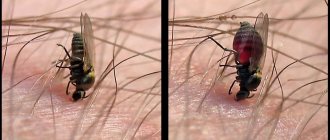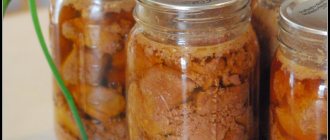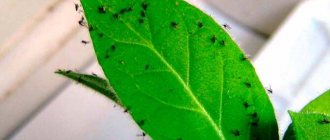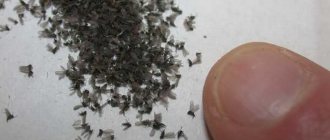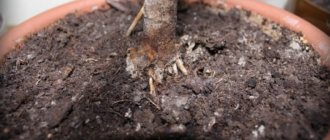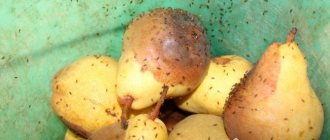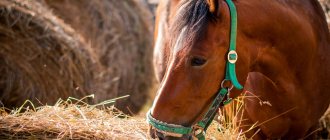Plants » Flowers
0
1566
Article rating
Kira Stoletova
If small midges appear on orchids, you have to choose ways to combat them. To do this, you need to know exactly what type of insects have infested your indoor flower.
How to get rid of small midges on an orchid
How to remove pests from an orchid
At home, you need to start fighting insects that fly over a tropical flower immediately after detecting pests.
To do this, use time-tested folk remedies or modern developments in the chemical industry. https://youtube.com/watch?v=GySTAsWgLpQ%3Ffeature%3Doembed
Before treating the plant with the chosen product, mechanical destruction of insects is carried out. First, we get rid of damaged leaves. The remaining ones are thoroughly washed with heated water. After the above-ground part has been processed, they move on to the root system. To do this, take the phalaenopsis out of the pot and clean the root system from pieces of substrate.
Then carefully wash the roots with running warm water. Epiphytes are transplanted only into fresh, disinfected soil.
Next, to finally get rid of insects, the plant is treated with drugs.
How to remove insects without chemicals
Methods for exterminating pests are chosen depending on the type and how many of them appear on the plant. To eliminate fruit flies and a small number of whiteflies, it is sufficient to use traditional methods. But if thrips appear, they can only be removed with strong chemicals.
To kill whiteflies, it is enough to wash the orchid’s leaf blades under running water every day for a week. Thus, the laid eggs will be washed away and the insects will not have the opportunity to reproduce. For the same purpose, you can wipe the plant with a soap solution.
Some types of pests cannot tolerate the strong odors of essential oils in fruits and vegetables. This feature can be used to repel insects. But the plant itself suffers from such odors. For example, thrips do not like citrus aroma. Therefore, we remove them by dropping zest from oranges, lemons or grapefruits into the substrate. They also do not tolerate the aroma of garlic well if you rub the leaves of the flower with it.
Important! The proposed methods are suitable only as a preventive measure or for the destruction of individual insects. If there is a strong pest infestation, they do not have a good effect. . Insecticide treatment
Insecticide treatment
To eliminate sciarids, the leaves and stems of a tropical flower are treated with the drug “Raptor”. Instead, you can use “Raid” or “Neo Dichlorvos” spray. Be sure to etch the soil using Bazudin or Grom 2. Additionally, the window sill or shelf on which the pot with the plant stands is disinfected.
To cope with whiteflies, the entire above-ground part of the plants is treated with the preparations “Sherpa”, “Aktara”, “Fury”. Adult insects and larvae will die if 3-4 treatments are done every 5 days. The leaves are additionally washed with soapy water.
Fruit midges are eliminated with aerosol preparations. Usually, Hexochloran spray or regular Dichlorvos works well on them. You can use other drugs with similar effects. Processing is carried out indoors. Half an hour after spraying, open windows and doors for ventilation. This time is enough for the fruit flies to die.
Thrips are very difficult to control. Complete destruction of this pest will require a lot of time and several treatments. They can be eliminated with Fitoverm or Actellik. Treatment is carried out every 10 days until all parasites are destroyed. Additionally, every 30 days the root system of the plant is washed and the soil is replaced with fresh one.
Traditional methods
If there are few insects and they do not cause much harm to the plant, you can get by with folk remedies. Garlic infusion is effective against some midges. It is prepared from crushed vegetable cloves. The plant material is filled with water and left for 5 hours. Then the infusion is filtered and the green part and the substrate in the pot are sprayed with it.
On a note! A peeled clove of garlic can simply be buried in the ground. The vapors it produces will scare away insects and they will disappear as quickly as they appeared.
Many insects cannot tolerate contact with wood ash. Then it is scattered on the surface of the substrate to drive away the enemy. This treatment is beneficial for the plant itself. Ash acts as a fertilizer and reduces soil acidity.
The soap solution prevents the appearance of insects and creates an obstacle to the life of pests. To do this, dilute a little liquid soap in water and wipe the leaves and stems on all sides with the resulting solution.
What to do?
To understand how to remove insects and what needs to be treated, you need to determine what type of pest attacked your plant. But there are general rules for destroying midges, suitable for all types of attackers:
- Place the affected flower in an isolated place for at least a month.
- Rinse off all visible midges with warm water. This can be done with a damp cloth or with a powerful spray. This procedure will help get rid of most of the midges.
- Trim off all affected areas of the orchid. Don't forget to treat the cut areas with wood ash.
The flower can be treated with both folk and pharmaceutical chemicals. But experienced gardeners recommend resorting to the help of the latter only in very extreme cases. Folk remedies include:
- soap solution (pour one teaspoon of liquid soap into 0.2 liters of water);
- garlic tincture (pour boiling water over five crushed cloves of garlic) (it is also recommended to simply place a clove of garlic in the soil);
- a solution of olive or grape oil (pour a tablespoon of oil into half a liter of water);
- wood ash, which not only reduces the acidity level of the soil, but also feeds it.
TIP: All solutions cover the leaf blade with a dense layer and interfere with the photosynthesis process, so do not forget to wash the drug off the plant in time.
As for insecticides, each type of attacking insect uses its own type of preparation:
- It is better to fight whiteflies with a solution of laundry soap. But if this remedy does not help, use “Aktellik”, “Aktar”, “Bazudin”, “Fury” (the plant must be sprayed with these products every five days). A vacuum cleaner will also help you say goodbye to the majority of adult whiteflies. Scare away the midges, wait until they start flying over the orchid and collect them with a vacuum cleaner.
- Fitoverm or Actellik will help you in the fight against thrips. (Process no more than three times with a time interval of ten days). After the destruction of thrips, it will be necessary to cultivate the soil monthly to prevent the reappearance of these midges.
- Sciarides are easy to defeat without even resorting to chemical solutions. All you need to do is install adhesive tape. Of course, it wouldn’t hurt to treat the soil with an insecticide. (“Raptor”, “Dichlorvos”, “Raid”). It wouldn’t hurt to treat the surface on which the pot with the orchid is located. After using many aerosol insecticides, it is necessary to ventilate the room after a half-hour period.
- For fruit flies, the main blow will be hunger strike. This can be achieved by removing all leftover food from the house, especially rotten vegetables and fruits. Always treat not only the plant itself, but also the soil in which it grows.
Remember that only the correct use of products will help cure an orchid. If you use drugs not according to the instructions, this will lead to even greater infection of the plant or its complete destruction.
What kind of midges live in orchids?
Contents of the article:
- 1 What kind of midges live in orchids? 1.1 Midges in orchids. What should I do?
- 1.2 Fungus gnat in an orchid
- 1.3 Thrips in orchids
- 2.1 Where do midges come from in orchids?
- 3.1 Measures to combat midges in orchids
- 4.1 Fighting midges
- 7.1 Where do midges come from in orchids?
- 8.1 Method - how to get rid of insects
- 9.1 Scary and terrible
- 10.1 Types of midges in orchids
Midges in orchids. What should I do?
If you notice that midges are flying around a pot with an orchid, then you may have questions:
- What kind of midges live in orchids?
- Are midges dangerous in orchids?
- What needs to be done and how to get rid of midges in orchids?
- Today's article is dedicated to answering these questions.
Midges that infest orchids can be “harmless” fungus gnats or “harmful” thrips. In order to choose the right means of protection, it is necessary to identify the flying insect.
First, analyze your watering regime and make sure that you do not overwater the orchid and leave two or three dry days between waterings. In this case, dry days are considered not those days when the soil dries out on the surface of the pot, but those days when the soil dries out completely throughout the entire depth of the pot.
https://youtube.com/watch?v=GySTAsWgLpQ%3Ffeature%3Doembed
For more information on how to determine whether the soil in a pot with an orchid is dry, read the article “How often to water an orchid.” Next, evaluate whether there is damage to the orchid leaves: multiple dark spots or a silvery film.
Fungus gnat in an orchid
If you water the orchid frequently and do not leave two or three dry days between waterings, and there are no characteristic damages on the leaves (multiple dark spots or a silvery film), then in your case, most likely, a fungus gnat has appeared in the orchid.
To finally make sure of this, evaluate the habitats and appearance of the midges.
Where do they live? Fungus gnats live in the ground. If we talk about orchids, then, as a rule, fungus gnats settle in those pots in which the soil consists not only of bark, to which moss or peat is added.
Important! Mosquitoes live in clean bark only if the bark has already decomposed. In particular, fungus gnats came to our house and lived in plants that grow in the soil, but they were not interested in orchids that grow in the bark
Appearance? Adults look like small black mosquitoes; in fact, they are most often represented when people talk about “midges.”
Are they dangerous? Adult fungus gnats do not cause harm. Damage can be caused by larvae, which in large numbers can damage the roots.
How to treat? The main method of protection is drying: in dry soil the larvae will not hatch, and the adults live for two weeks. Start by reducing watering of the orchid. Additionally, you can buy yellow sticky tape at the flower shop to collect the adults.
Or put a yellow saucer with water - mosquitoes fly towards the yellow color. As a last resort, you can replace the soil by washing the orchid roots to remove mosquito larvae. And in the future, follow the general rules for watering orchids.
Thrips in orchids
Thrips in orchids If you notice that multiple bites have appeared on the leaves, which on the green leaf of the orchid become white, silver, and darken over time, then there is a high probability that your orchid is being devoured by thrips.
Where do they live? Thrips, unlike mosquitoes that live in the ground, live on leaves and actively feed on orchid leaves.
Appearance? They have an elongated shape, a striped abdomen and two wings.
Thrips, rather, do not even fly, but quickly run and hide in the bark. Multiple damage appears on the leaves - bite sites,
Are they dangerous? Thrips, unlike fungus gnats, cause significant harm to the orchid. Insects pierce plant cells and completely suck out the juice from them. Fungi may grow in the bite areas.
The orchid leaf itself receives not only and not so much a decorative defect, but dies, deprived of cell sap. Therefore, if thrips are found on an orchid, you should not delay their destruction.
How to treat? For treatment, it is necessary to rinse the orchid in the shower (during the next watering), which will wash off some of the individuals, and treat the orchid with Fitoverm (or another drug for thrips) according to the instructions at least 3 times with an interval of 10 days.
Where do midges come from in orchids?
Often the pest larvae are brought in with the soil. After flowers are planted in it, midges appear and multiply rapidly. If insects are infested in one of the pots with indoor plants, they will also colonize the neighboring ones, if there are suitable conditions there. One of the main conditions is sufficient soil moisture. Excessive watering may be one of the reasons for the appearance and rapid reproduction of midges in flowers. Before taking any control measures, you need to find out what kind of midges have infested your home orchids.
If you notice damage, but do not find pests, hold off on using chemicals - this may be the result of sunburn or other troubles
Insects that live in orchids
Most often, sciarids - small insects 3-5 mm long, black in color, popularly called flower midges - settle in the soil where orchids grow. In fact, these are fungus or fruit gnats, similar to small flies. These insects lay eggs in the ground, where larvae develop, similar to worms, 6-7 mm long, white. The sciarids themselves do not harm plants, but their larvae damage seedlings and thin roots of weakened plants and seedlings. These damages can become foci of rot and sites of fungal diseases. Therefore, small black midges that have settled in orchids can cause significant harm to plants.
Flower growers often mistake tiny butterflies - whiteflies - for small white midges. These miniature insects fly quickly and hide well. It is not difficult to detect these insects; you just need to touch the leaves or soil, and they immediately take off. Butterflies are usually not interested in plants with dense, leathery leaves, but settle on thin-leaved orchids with delicate skin. Whiteflies and their larvae feed on plant sap, sucking them out of leaves. As a result, the plant withers, the affected leaves curl and turn yellow. The eggs and larvae of this pest are yellowish in color. They can be found on orchids - on the surface of leaves, under the bark and leaves.
Another type of insect that attacks orchids and looks like midges is thrips. The insects are very small, only 2–2.5 mm long. They can cause serious damage to any type of orchid. Thrips look like small dark brown or black “sticks”, equipped with two pairs of wings that are folded on their back. They run fast and instantly hide in the ground. Unlike sciarids, thrips, having flown to a plant, try to hide in the substrate as quickly as possible. These pests are nocturnal and are rarely seen during the day. Therefore, to make sure that there are thrips on the orchid, some gardeners keep watch near the flower pot with a flashlight. One of the signs indicating that plants are affected by this pest is the appearance of many dark spots and a silvery film on the surface of the leaves. Thrips lay eggs in leaf tissue. The larvae that emerge from them (tiny yellow or green worms), which are almost impossible to see with the naked eye, live inside the leaves, feeding on their tissues. As a result, the leaves become covered with many holes and dark spots, wither and, settling on orchids, affect both leaves and flowers, and also “gnaw” the roots. Flowers have damage similar to leaves, and constrictions appear on the roots.
Sometimes fruit flies (drosophila) settle in pots where orchids grow. This is a small insect about 3 mm long. They feed on fermented vegetables and fruits, as well as plant residues. These midges settle in the substrate if the plants are watered with tea leaves or sprinkled with the remains of tea from the teapot as fertilizer, which is not advisable. Sometimes they are attracted to half-rotted moss or peat. But fruit flies can choose a flower pot as a breeding site if the soil in it is constantly over-watered. For plants, the insects themselves and their larvae are completely harmless, but gardeners should be wary of the fact that they are settling in the ground - there is definitely excess watering, which may not be harmless to the root system.
Carefully monitor the watering of the orchid - excessive soil moisture can cause the appearance of midges
Getting rid of insect pests
If there are midges on orchids, then you need to get rid of them immediately, otherwise not only the flower will die, but also the crops growing nearby.
To understand how to deal with a pest, first determine its variety, then carry out measures common to any species. General rules:
- quarantine the flower for a month, isolating it from other plants;
- cut off the affected areas, then wipe the remaining leaves and stems with a solution of laundry soap, using a sponge, soft cloth, or rinse under a warm shower;
- remove the roots from the pot, free them from the substrate and rinse under running warm water;
- transplant into disinfected fresh substrate.
Note! When subsequently processing the above-ground part, cover the soil with film so that larvae and insects do not get into it.
No chemicals used
Not every pest can be gotten rid of using simple methods without the use of chemicals. For example, you can try to remove fruit flies and whiteflies using the simplest measures, but they will not help against thrips.
When midges appear, you need to wash each leaf every day for a week under running water to wash off the eggs and their waste products, or wipe with a solution of soap (preferably laundry soap). Thrips really don’t like the smell of citrus fruits, so you can put the zest of lime, lemon, or orange into the substrate, and rub the leaves with garlic, the phytoncides of which thrips also cannot tolerate.
The simplest ways:
- water the substrate with a pink solution of manganese;
- Sprinkle the soil with mustard powder once a week;
- every 3-4 days, sprinkle the soil with calcined river sand;
- replace the substrate, if it contains moss, tea leaves, which were used as fertilizer;
- hang adhesive tape next to the pots;
- Remove any food debris, stale vegetables and fruits from the premises.
Information! These control methods are effective if there are few insects and they have not had time to create large colonies, or if they are used as preventive measures.
Insecticides against midges
There are drugs that are effective at different stages of orchid damage, and how to use them to get rid of a specific insect is indicated in the instructions.
Insect and preparation for its destruction:
- Fungus gnat (sciarids). Treat the above-ground part (without flowers) with Raptor, Neo Dichlorvos, Raid, the soil with Grom-2, Bazudin. The surface where the pot stood is also subject to disinfection.
- Whitefly. Insecticides Aktara, Sherpa, Fury are effective when spraying stems and leaves.
- Drosophila. We remove midges with Dichlorvos, Hexachloran, Combat. Spraying should be carried out indoors, after half an hour, ventilate.
- Thrips. This pest is more difficult to control than other midges, so it is necessary to use Fitoverm and Actellik every 10 days until they are completely destroyed. Wash the substrate every 4 weeks with warm water.
Folk remedies
If there are few midges in orchids, then simple and affordable folk remedies, the effectiveness of which has been tested in practice, will help get rid of them:
- garlic infusion - pour several crushed cloves with warm water and leave for at least 5 hours, use to spray the green part and substrate;
- bury a peeled clove of garlic in the ground - pests do not like its smell;
- pollinate the surface of the substrate with ash;
- as a preventive measure and to remove small colonies, wipe the leaves and stems with a sponge (napkin) soaked in a warm solution prepared from 20 g of liquid soap and a glass of water;
- wipe the leaf blades and stems with an oil solution (40 g olive or grape oil + 0.5 l water).
Note! Use the products daily for 5-7 days, after a break of 3-4 days, repeat the course 2-3 times. After a month, carry out preventive treatment in any way.
Larvae - how to get rid of them
It is especially difficult to fight larvae that hide in the substrate. To destroy them, you need to pour hydrogen peroxide dissolved in water (1 part peroxide + 4 parts water). After watering, a slight hiss will be heard, confirming that the drug has reacted. As soon as the substrate dries out, water it again. The larvae should die after such exposure.
In sciarids, the larvae die if there is no moisture supply, so you need to stop watering for a while. If there are a lot of them, then the substrate needs to be replaced and the roots washed.
If affected by thrips, it is necessary to inspect the leaves and remove the affected ones - the female lays eggs in the pulp of the leaf. After pruning, spray the entire plant and substrate with an insecticide.
Why do orchids have midges?
Pest larvae can get into the substrate along with tree bark, coal or dry moss. Carry out heat treatment of all components of the soil composition for orchids. Calcine expanded clay and pebbles in the oven, soak sphagnum and bark in potassium permanganate.
Source: Depositphotos Midges infect all parts of the orchid
Midges appear in moist soil with stagnant liquid. Do not allow the substrate to become waterlogged; make sure that water does not accumulate on the walls of the pot. Containers made of plastic and glass retain moisture inside the soil; water orchids in such pots less often.
If insects appear on one plant, they will spread to all orchids. Isolate the affected flower from pots of healthy plants.
Do not purchase an orchid with spots and stains on the leaves, dry flower stalks and mucous rhizomes. Place the purchased plant in quarantine on a separate windowsill. Treat the flower with an antiseptic.
Types of midges
It is important to know what kind of midges are infested in orchids in order to choose an effective method of control. To do this, you should take a closer look at the appearance of the insects and determine on what plant they have settled.
Sciarides
Most often, small midges in orchids are sciarids, black insects, 3-5 cm long. People call them flower midges. In reality, these are fruit or fungus gnats that look like small flies. They lay eggs in the ground, after which white, worm-like larvae begin to develop. Sciarides do not harm plants, but their larvae feed on the roots of seedlings, weakened plants and seedlings. Places of damage become centers of rot and fungus.
Whiteflies
Sometimes white midges are visible on orchids or photos of flowers. But these are butterflies - whiteflies. They hide well and are able to fly quickly if you just touch the plant. Most often, these pests of indoor plants are not interested in dense leaves; they prefer the delicate skin of orchids. The insects themselves and their larvae feed on the juice of this plant, extracting it from the leaves. If you do not fight whitefly on indoor flowers, the plant withers, the leaves turn yellow and curl. Insect larvae and eggs are light in color. You can notice them under the bark, leaves or on their surface.
Thrips
Another species found in an orchid pot is thrips. These are small insects up to 2.5 mm. They cause significant harm to all types of orchids. They resemble sticks, having two pairs of wings folded on the back. Most often they hide in the ground, they prefer a nocturnal lifestyle, so it is extremely difficult to notice them during the day. To make sure that thrips have settled on a flower, you can approach it at night. One of the signs of damage is dark spots on the leaves. These insects lay their eggs directly in the leaves, and the hatched larvae begin to eat the leaf tissue. As a result, the leaves darken, become covered with small holes, and not only the leaves are affected, but also the flowers and roots.
Fruit midges
It happens that fruit or onion midges appear in the orchid. This insect, up to 3 mm long, feeds on sour fruits and vegetables and rotten plant remains. This insect can live in the soil if you water it with tea leaves and sprinkle it with tea. Semi-rotted peat or moss can attract midges. If the soil in the pot is too moist, you can expect fruit flies to appear soon. These midges do not harm plants, but the very fact of their appearance indicates that the soil is too wet, which harms the plant.
Description of pests
The first step in effective insect control is identifying the species. Small midges on orchids can destroy the plant.
Sciarides
Another name for the parasite is fungus gnats. They are noticed when a dark flock appears above the plant. Black and deep gray small midges in orchids are 4 mm in length. Due to the 2 transparent wings, they look like mosquitoes. The appearance of black sciriada is observed in autumn and spring, when the room is damp and cool. There is no harm to the plant from the adults, but the larvae infect the roots of the plant, delving to a depth of 1 cm into the ground. The affected shoots and roots are quickly colonized by rot. As a result, the flower dies.
Whiteflies
If there are midges in an orchid and they fly over the flower, gathered in small white flocks, these are whiteflies. In appearance, these are dotted white insects up to 2 mm in length. The pest lays larvae on the back of the leaves and along the entire length of the stem, leaving behind yellow streaks. During the full development cycle, the larva infects more than 50% of young shoots. The affected flowerpot deforms the shape of the stem. The leaves gradually dry out.
Small midges on orchids can destroy the plant.
Drosophila
Tiny midges in orchids with a yellow body color and red eyes are called drosophila. They appear on the plant in any season. From eggs, adults grow in just 6 days. The size of an adult insect varies within 5 mm. Often the appearance of these pests coincides with the process of feeding flowers and introducing food residues. Drosophila starts the process of plant rotting.
Thrips
Elongated striped midges on orchids with flattened wings are called thrips. They live both on the ground, where they hide, and on the leaves, the juice of which they feed on. After a parasite invasion, the plant becomes covered with many black dots or a silvery film. The insect is especially active at night, making it difficult to diagnose during the day.
Due to the large number of bites, the affected plant gradually dries out. The pest larvae infect only leaves. If there are small midges in the soil of the orchid, urgent measures are taken to get rid of them: the pests multiply in the shortest possible time.
Prevention of flower protection
The presence of insects occupying flower pots directly indicates that the plants are in unsatisfactory conditions.
You can pick up the same sciarids along with the soil - often their larvae are already included in the kit. To avoid such a nuisance, you should not ignore measures for thermal soil treatment. It can be either frozen or baked in the oven.
To prevent parasites, follow basic care rules
Such precautions include: . drying the soil in the intervals between waterings, moderate watering of the plant no more than once every 3-4 days, the absence of food near the flower that can undergo the process of rotting, keeping the substrate in the freezer for 2-3 days before planting: this helps get rid of eggs and parasite larvae, timely removal of fading or damaged parts of the plant, periodic loosening of the soil, wiping the leaves of the flower with soapy water several times a year, excluding the flowering period
- drying the soil between waterings,
- moderate watering of the plant no more than once every 3–4 days,
- the absence of food near the flower that can undergo the process of decay,
- keeping the substrate in the freezer for 2-3 days before planting: this helps get rid of eggs and larvae of parasites,
- timely removal of fading or damaged parts of the plant,
- carrying out periodic loosening of the soil,
- wiping the leaves of the flower with soapy water several times a year, excluding the flowering period.
To prevent parasites, follow the rules of care
In order not to attract midges, some actions are limited:
- decorative moss is placed in a pot of a houseplant,
- Fertilize with tea, coffee grounds and egg shells.
- water the plant with infused water on bread crumbs.
Midges in orchids. What to do in this case.
WE GET RID OF MIDS ON ORCHIDS!!!
Midges in the soil (substrate): reasons, how to get rid of them.
Orchids (parasite control)
A good prevention method is to plant plants with a sticky layer on the leaves near orchids. This serves as a barrier between the insects and the flower.
Basic precautions must be taken. Dry the soil between waterings so that it is completely dry within two or three days. Make sure that there are no food leftovers in the kitchen that are susceptible to rotting. Take it out of the trash can in a timely manner.
When replanting plants, the substrate (even purchased at a specialty store) should be placed in the freezer for several days. As a result of this procedure, the midge eggs will be destroyed.
Sometimes wipe the orchid leaves with soapy water. Install mesh on the windows to prevent midges from flying in from the street.
Proper care guarantees that no midges in orchids can harm them.
Not every midge that appears near a plant can cause harm to it, but each one indicates the wrong actions of the grower. Midges settle where there are problems with the level of humidity, so thrips are bred when there is increased dryness, and fungus gnats are bred when there is high humidity.
There is no need to try to use leftovers from your table as fertilizer for orchids; it is enough to use special fertilizers. A citrus peel or a sprig of lavender will repel parasites.
Prevention of further infections
To protect your pet from subsequent attacks by pests in the form of midges, the gardener must adhere to the following rules:
- Properly moisten the soil. The soil should remain dry before the next watering for two to three days.
- Try to maintain an optimal level of air and substrate humidity.
- Place a peel of some citrus fruit or a sprig of lavender next to the flowerpot. These items are excellent at repelling harmful insects.
- Do not store leftover food indoors and promptly dispose of accumulated garbage.
- Any substrate, even purchased in a specialty store, should be processed in the freezer or microwave.
- Monitor the hygiene of the phalaenopsis: give it a shower once a week and wipe the leaves from dust with a damp cloth.
- Protect open windows with a mosquito net. This way you can limit the invasion of insects, at least from the window.
After an orchid is infected with small insects, white or other bugs, mealybugs, scale insects, mites, including spider mites, the plant begins to slowly die. How to deal with pests and avoid re-infestation - read the materials of our experts.
Red spider mite
How to get rid of such a mite on an orchid, what control measures exist? The red spider mite is a small insect up to one millimeter long. Adults have eight legs, and larvae have six. Their danger lies in very rapid reproduction and excessive gluttony. In addition, they often spread to neighboring plants and can be hidden in the soil and fallen leaves.
Most often, red spider mites enter the room with newly acquired plants. Therefore, when buying an orchid, you need to examine it as carefully as possible, and after purchasing, place the plant separately from the others and observe it for several weeks. As a rule, mites are located on the inside of the leaf, pierce it and begin to actively suck out the juice; the leaves become covered with light spots and then with a thin cobweb.
Also, the appearance of this pest is provoked by high air temperature, low air humidity and excessive fertilizing. Infection can be facilitated by damaged soil for replanting; the tick can enter the house through the wind and even be carried on clothing.
If the infection is not yet widespread, you can use a regular solution of green or laundry soap. Using a soft cloth or cotton wool soaked in liquid, you need to rinse the inside of the leaves, and then spray the entire plant with a spray bottle. A week later, this procedure must be repeated.
For more severe infections, you can use the following, more effective means:
- Taking two chopped heads of garlic, place them in a glass container, add one liter of water and place them in a dark place for a week. Then strain the infusion, dilute it halfway with water and spray the orchid.
- Pour one hundred grams of onion peel into three liters of water and leave for five days, strain and spray the plant.
- Rubbing with alcohol or irradiating the inside of the foliage with ultraviolet light helps a lot in the fight against spider mites.
- To remove eggs, wipe the affected areas with essential oils.
If the above methods do not help, you need to spray with an insecticide (Aktellik, Fitoverm, Neoron, Actofit, Vermitek and others).
Vanda orchid: care at home. You will read about this in our next article.
And here is an article that talks about the Ludisia orchid.
Methods for controlling midges
Each type of midge has a corresponding approach to destruction. Having identified each insect, you can describe how to deal with it:
- Drosdophila. The presence of these insects on an orchid requires the removal of excess fallen pieces of the plant, moss and tea. You should also reduce the amount of moisture (watering). If you deprive these insects of food, they will soon leave the orchid. Some gardeners often use special insect traps to speed up the process.
- Sciarides. The fight against these insects is more difficult than against fruit flies. In order to keep the soil clean for the plant, it is necessary to use special sterile mixtures when planting. In cases where the owner of the plant wants to select the soil himself, he should water the soil and freeze it in the freezer. When planting the plant, you do not need to use fertilizers from food waste. They will only attract insects. There are also special medications on sale that will help solve the sciarid problem for a long time.
- Whiteflies. To get rid of the problem of the presence of these insects, it is necessary to use special preparations, such as: Sherpa, Bazudin, Fury, etc. For prevention, you should wipe the leaves with a weak solution of laundry soap.
- Thrips. Special preparations are used for orchids. The soil is soaked and sprayed with Fitoverm and Aktellik. Wipe the orchid leaves and rinse the soil once a month.
Each of the methods of combating this or that insect is simple. If used correctly, the problem will go away, and the flower will live and bloom with renewed vigor. The drugs mentioned in this article are available in specialized stores in large quantities and at affordable prices. There are other medicines, such as: Grom2, Sherpa, Neodichlorvos, etc. Each of them can help in one case or another. But it is worth noting that incorrect handling of these drugs can seriously harm the orchid. How and why can be found in the instructions for the drugs.
https://youtube.com/watch?v=T7qN6292oF4%3Ffeature%3Doembed
How to deal with midges in orchids
Once you have determined which insects are in the flower pot, you can choose the appropriate control option:
- To destroy fruit midges, you can do without the use of chemicals. Here it is enough to remove moss, tea and other substances that can decompose from the pot. Reduce watering volume. Fallen petals do not need to be left in the pot. Remove what attracts midges and they will soon disappear. To destroy flying adults, you can use regular flypaper,
- Cyarid control is more difficult. If you do allow them to appear in your apartment, you will have to use chemical industry products. So, for soil cultivation you can use “Grom-2”, “Bazudin”. In addition, it is recommended to use preparations intended for treating window frames, shelves on which pots are installed, window sills and racks,
- To destroy white-winged butterflies, it is recommended to use insecticidal preparations. Treatment should be carried out every five days. Results will be visible after just a few procedures. The products “Fury”, “Sherpa”, “Aktellikom” are suitable here. It is also recommended to thoroughly wash the bark in which the plant “lives”. To do this, use a large amount of water,
- thrips are also removed by chemical means. The drug “Actillicom” is suitable here. The plant needs to be treated three times within ten days. After killing insects, it is recommended to periodically wash the leaves and “water” the soil monthly.
The difficulty of treating indoor plants is that it is not always possible to use insecticidal agents. In this case, folk methods that have repeatedly proven their effectiveness will come to the rescue:
- the smells of garlic, citrus and lavender repel midges,
- Wash the leaves of the infected plant with warm water and laundry soap for several days,
- replant the orchid in clean new soil, thoroughly washing the roots,
- water the infected plant with a weak solution of potassium permanganate,
- plant leaves can simply be washed in the shower,
- Sprinkle the soil with dry mustard weekly,
- Heat river sand in the oven and sprinkle it on the ground. If necessary, the procedure is repeated after a few days.
What to do if your orchids are infested with midges? First you need to determine what insects appeared on the flower. After all, the control method will be determined precisely by the type of pest.
If fruit flies appear in the plant, then you don’t need to use pesticides. It is enough to reduce the frequency and volume of watering, eliminate the mulch layer (moss or tea)
It is important to let the soil dry completely. To destroy fruit flies, it is enough to deprive the pests of food (eliminate missing vegetables and fruits)
It is quite difficult to remove sciarids. Flying insects can be destroyed using modern insecticides: “Raptor”, “Raid”, “Neodichlorvos”. These compounds must be used to treat shelves, window frames, and window sills. To cope with larvae living in the soil, “Grom-2” and “Bazudin” are used. You can also spread citrus peels, garlic or lavender in the soil to repel pests.
https://youtube.com/watch?v=T7qN6292oF4%3Ffeature%3Doembed
Whiteflies can be destroyed using the following insecticides: “Aktara”, “Bazudin”. Affected orchids will need to be sprayed once every 5 days. To increase efficiency, you can use a solution of laundry soap diluted in a ratio of 1:6.
If there are midges in an orchid, what to do with them and what preparations to treat them with, you need to find your bearings as quickly as possible. Once you have decided on the type of pest, you need to choose the right method to combat it. For example, for drosophilas it will be enough to remove the top mulch layer from the soil and also slightly reduce watering.
Preparations designed to combat flying insects can effectively help against sciarids. The most common of them is Neodichlorvos. Butterflies can be controlled by periodic spraying with insecticidal preparations. Leaves can be washed with a solution of water and laundry soap.
Drugs such as Fitoverm or Actellik effectively help in the fight against thrips. They should be treated a couple of times a month.
Treatment of flowers with insecticides
Some gardeners believe that since they have learned how to get rid of midges in orchids, they can immediately buy any product and begin processing.
Important! Certain insecticides are designed to control specific pests.
If the belonging of midges to a specific group has not been determined, then manipulation cannot be carried out. This may harm the flower.
Knowing what pests have settled in the orchid pot, you should act.
Processing in this case is divided as follows:
- Sciarides. If these insects are noticed, then treat the stems and leaves with “Raptor”, “Raid”, “Neo Dichlorvos”. As for the soil, it is etched with Bazudin or Grom-2. We should not forget about disinfecting window sills or other surfaces where the flowerpot stood.
- Whiteflies. To combat these midges, the following products are used: “Fury”, “Sherpa” and “Aktara”. Only stems and leaf blades are processed.
- Drosophila. Not knowing how to get rid of midges in orchids, which are called fruit flies, you should resort to the help of Hexachloran, Dichlorvos or Combat. The products must be used strictly according to the instructions.
- Thrips. Controlling these pests is quite difficult and takes a long time. It is best to use “Aktellik” and “Fitoverm”, which are used to treat once every 10 days. The manipulation is carried out until all thrips are destroyed.
Chemicals
Radical measures have to be taken when the substrate is already swarming with larvae; it is enough to lift its top layer 1 cm thick to detect them. Unfortunately, many chemicals are toxic and their use in residential areas is undesirable. It is advisable to move orchids affected by midges to a glazed balcony or veranda and spray there.
In enclosed spaces, treatment with the drugs Largon, Mikromit, Difluorobenzuron is allowed, which can destroy adults and larvae; Intavir and Carbofuran are considered stronger. Teflubenzuron affects the life cycle of sciarids and inhibits the process of transformation of larvae into adults, thus preventing an increase in the size of the colony.
Flower growers speak well of the granular product Grom-2, which is scattered on the surface of the substrate and lightly mixed with the top layer. Its consumption rate per 1 sq. m area is only 1-1.5 g, and it is effective until the granules are completely dissolved within 14 days.
Bayer products are considered harmless to humans, which are used both to prevent the appearance of sciarid larvae and to get rid of adult insects. When using the drugs Regent and Regent-800, you should carefully calculate the dosage. If the standard recommended solution is 1 g in 10 liters of water, then for orchids this norm is reduced by at least half. Finally, proven methods of combating house flies are used - Dichlorvos, Raptor sprays, and against larvae - Fly eater.
How to get rid of larvae
To destroy pest larvae remaining in the soil, use a solution of hydrogen peroxide. The drug is mixed with water in a ratio of 1:4 and the soil is watered with this product. A hissing sound will be heard for several minutes, indicating that a chemical reaction is taking place. When the substrate dries a little, you can repeat this procedure again. All larvae will die from exposure to such a solution.
To destroy sciarid larvae, simply do not water the orchid for a while. They cannot tolerate dryness and die quickly. If there are too many of them, it is recommended to replace the soil with fresh one, after thoroughly washing the root system with warm water.
Reasons for appearance
Why are there small pests in a pot with a plant? The very first reason for the development of pests is the soil mixture. Initially, there may be destructive insects in the soil, which the grower may not even be aware of. Therefore, it is better to put the purchased substrate in the freezer for a day or in the microwave for a few minutes. This way the soil will be cleared of parasites.
The next reason why midges appeared is the acquisition of a new plant. As soon as a new orchid appears in the collection, it must be quarantined for a month to monitor for diseases and pests.
The following described factors also contribute to the reproduction of midges on the plant:
- incorrect watering regime - there is either too much water or, on the contrary, not enough water (ideally, the soil should stand dry for two to three days, and only then should it be watered again),
- poor soil composition, which does not allow air to pass through, as well as the presence of decorative moss on the surface, which also does not allow air to circulate,
- unsuitable fertilizers (usually traditional fertilizing recipes are not suitable).
Below is an informative video about the reasons for the appearance of midges on an orchid:
Preventive measures
Sometimes gardeners, not knowing the rules for caring for orchids, create an environment favorable for the reproduction of insects on their own. Some of them water the flower frequently and try to give it a large amount of liquid. Others, as mentioned earlier, place decorative moss on top of the soil.
Many housewives try to fertilize the flower with a variety of foods, believing that this will help make it healthier and more lush. There is no need to believe various myths; it is better to read reliable information about caring for the plant and do everything to ensure that it is strong and healthy.
It is important not to leave fruits or other products near the plants, because because of this, midges fly in from the street and lay larvae directly on the plant
The plant sometimes (several days) needs to be in completely dried soil.
There is no need to water it too often, it is important to follow the regime. It is worth maintaining a normal level of moisture in the room. You can place a peel of citrus fruit or a branch of lavender next to the pot. These odors can repel these insects. Midges can fly in from other rooms where food remains remain
It's better to take out the trash more often.
Before planting the orchid, it is worth placing the substrate in a cold place for 2-4 days. It's better to put it in the freezer. This will help kill insects if their larvae are still present in the soil. It is worth treating the sheet plates with a soap solution and also wiping them with a wet sponge.
But you also don’t need to do anything without understanding exactly what insects have settled in the orchid. If you fight midges incorrectly, you can only make the flower worse and lower its immunity.
Getting rid of these pests isn't too difficult, so don't panic. The fight may not be quick, but it is effective. Before using any product, you must read the instructions. Before fertilizing a plant, you should consult with professionals or study information on the Internet. Incorrectly selected fertilizers and poor care are what can provoke the appearance of midges, which will ruin the life of the gardener. It is better to prevent the occurrence of parasites than to treat the plant for a long time. If you take care of a flower, it will delight the owner for a long time.
To learn how to get rid of midges in orchids, see the following video.
Reasons for the appearance of midges in orchids and ways of getting into the house
Fungus gnats are attracted to weakened plants with decaying substrate that is not allowed to dry out. The ideal place for propagation, in addition to the substrate, is the flower tray located in a shaded, damp place.
Sciarids lay eggs in the contents of pots with growing paphiopedyllums, miltonias, masdevallias and other terrestrial orchids; a soil mixture with humus is especially attractive to them. Orchids that are grown in bark are less attractive to midges, unless the substrate has long expired.
Mosquito eggs enter the room with purchased soil. Experienced orchid growers advise not to plant flowers in it right away, but to observe for several days to see if midges are flying over it, or to heat it or pour boiling water on it, thus disinfecting it from other possible pests and.
Adults enter the apartment through an open window or through ventilation, sometimes they are brought in with bouquets of flowers or spoiled vegetables from the market.
Dampness and mold
Fungus bugs are not the most common pest of indoor plants. They are often confused with fruit flies (Drosophila), although our mosquitoes are darker in color . While fruit flies fly near fruits and rotten foods, sciarids appear near wet soil, sewers and drains.
Fungus gnats are attracted to CO2 (carbon dioxide), which is why they fly straight into your face.
Adults of these midges are 1-2 millimeters in length, thin and similar to very small mosquitoes. These tiny black insects seem harmless because they are just flying around the plant.
But while adult insects sit on the leaves of the Orchid without harming it, their larvae feed on juices from the thin root hairs of the flower . This leads to yellowing of the leaves and weakening of the plant. They can also damage the plant's fragile roots or stems, leaving it vulnerable to rot and infection.
The easiest way to avoid these midges is to water your Orchid properly. It is overwatering and poor drainage that promotes fungi, mold spores and rot that attracts fungus gnats.


